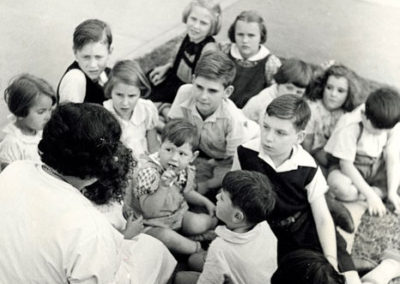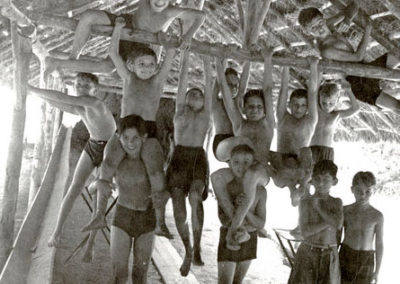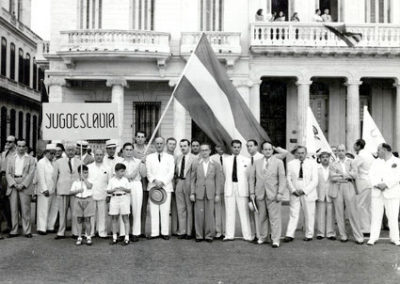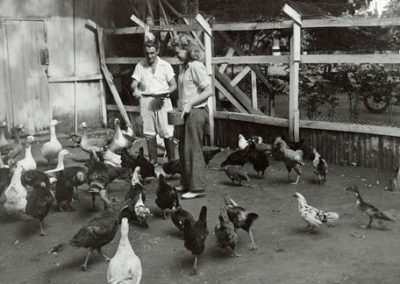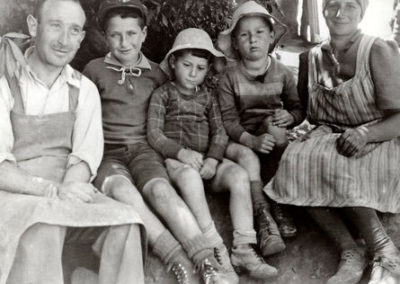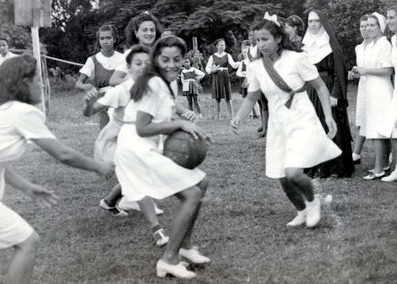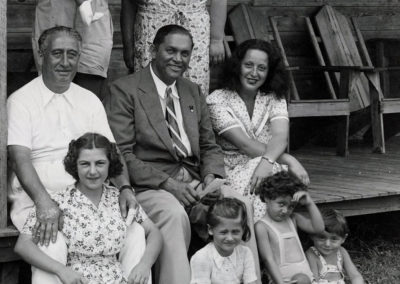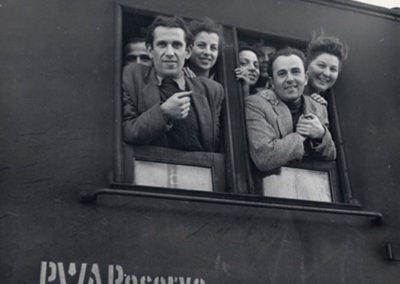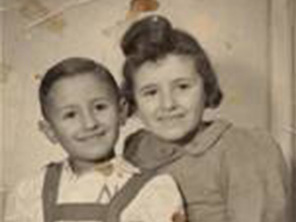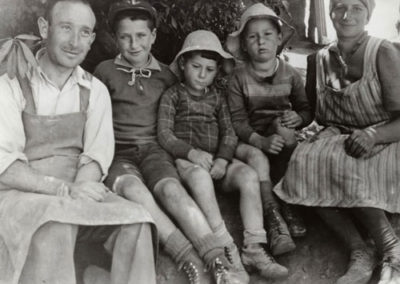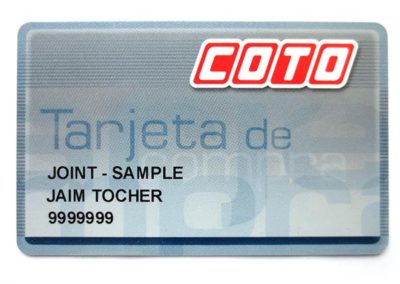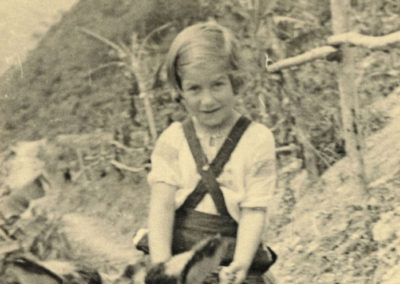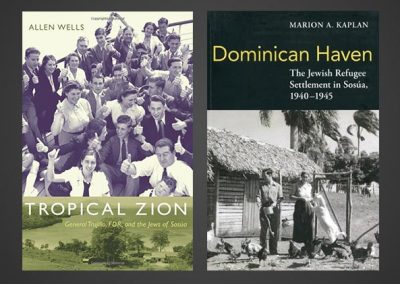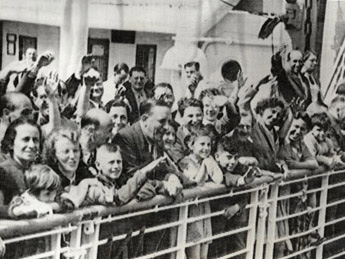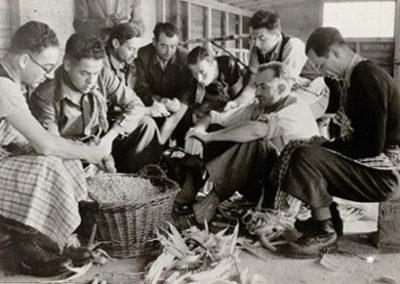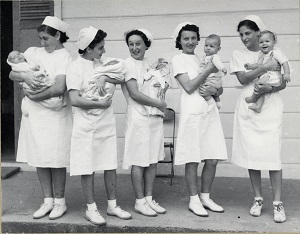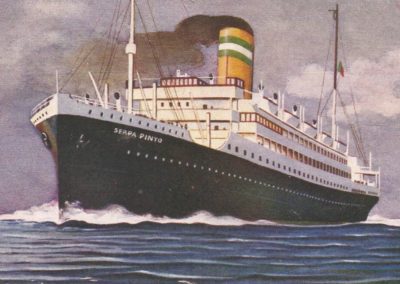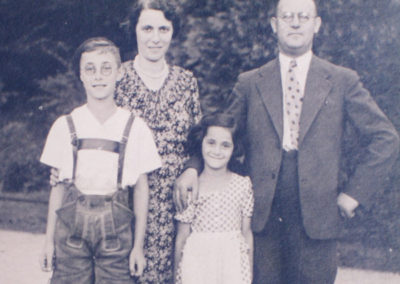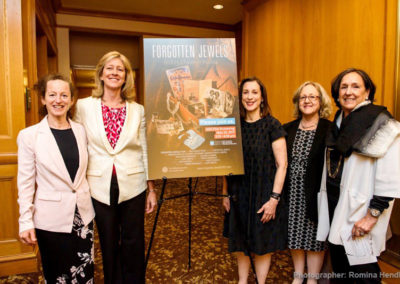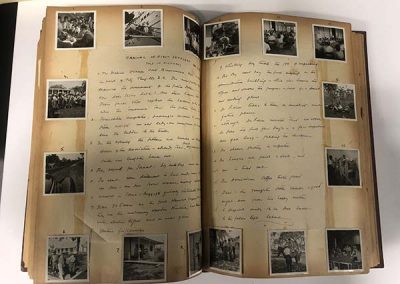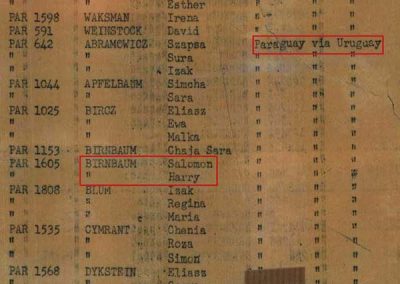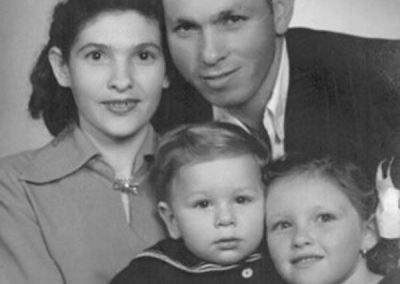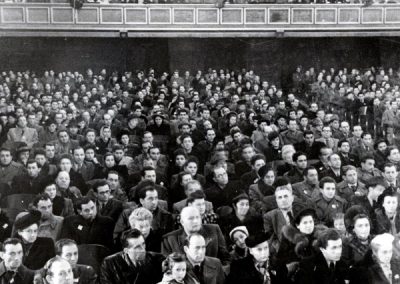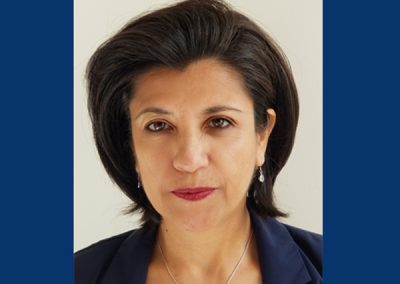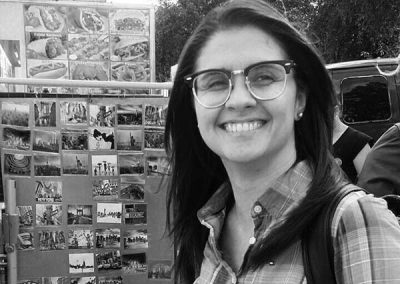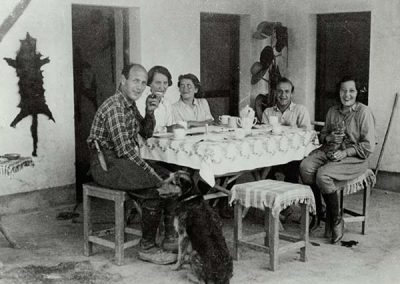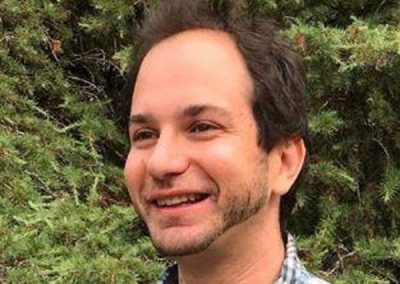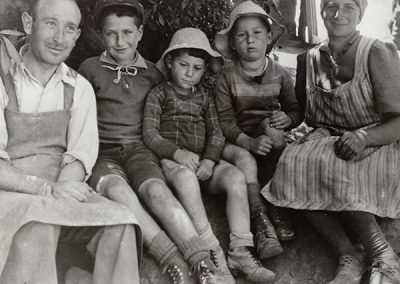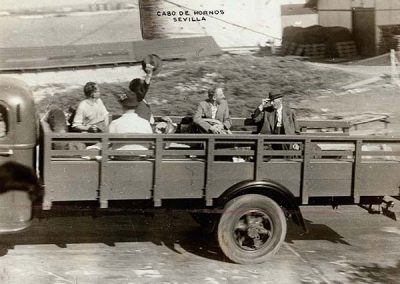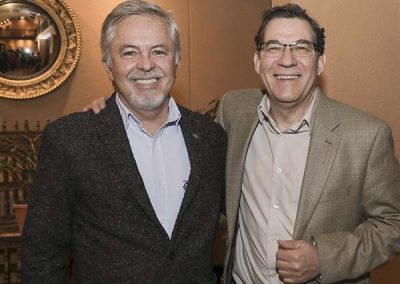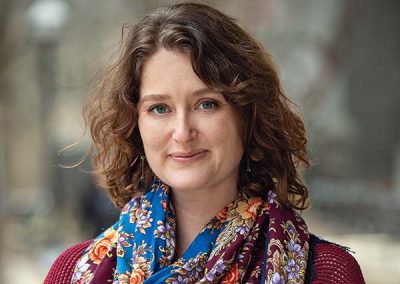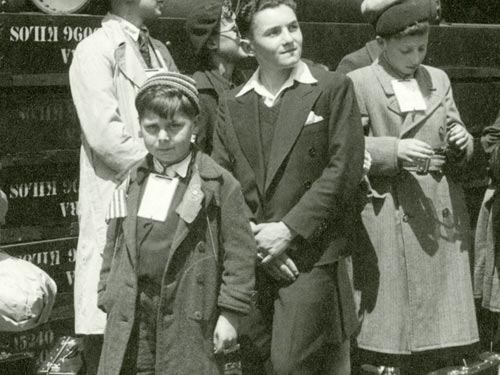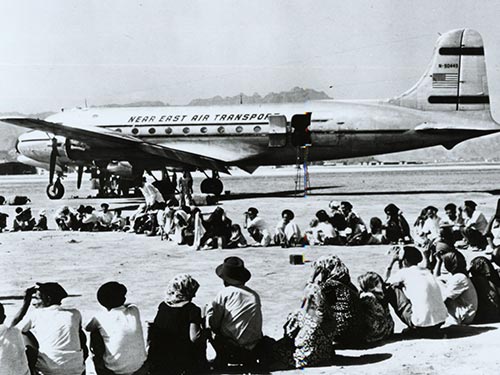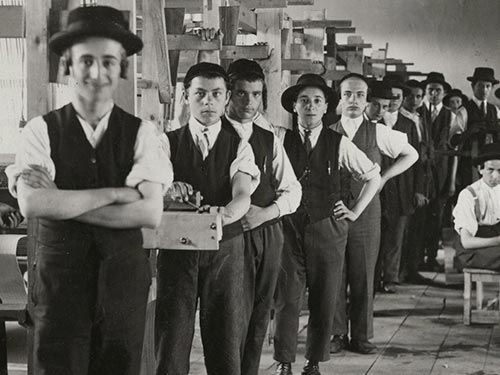Latin America
The Strauss family, refugees from Shanghai who recently arrived in the Dominican Republic.
Sousa, Dominican Republic, 1940s.
JDC sought emigration opportunities in Latin America for Jews escaping Nazi Germany, establishing the Dominican Republic Settlement Association (DORSA), which assisted 700 Jewish refugees; a refugee program in Cuba for 12,000 refugees; and programs in partnership with local Refugee Assistance Committees in Bolivia, Peru, Ecuador, Brazil, and Uruguay to assist Jewish refugees. By the 1980s, JDC was providing technical assistance, consultation, and leadership training to local Jewish organizations, primarily in Argentina, Brazil, and Chile. During the financial crisis of 2000 in Argentina and later Uruguay, JDC helped develop a large network of relief programs.
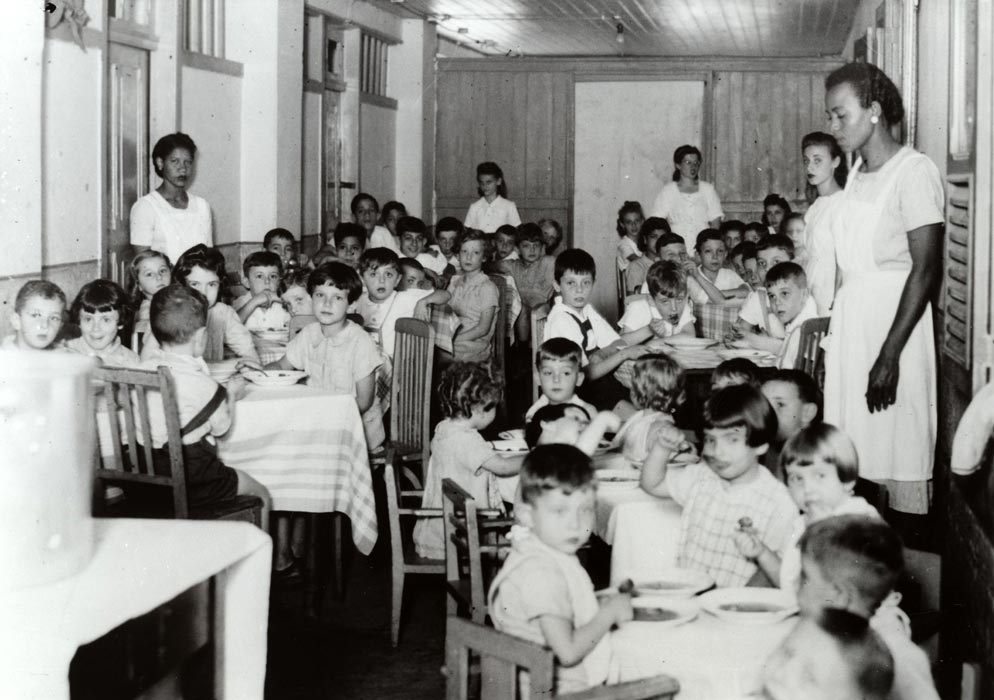
Children of Jewish refugees having their noonday meal
JDC partnered with the local Refugee Assistance Committee to support this program.
Rio de Janeiro, Brazil, December 1941.
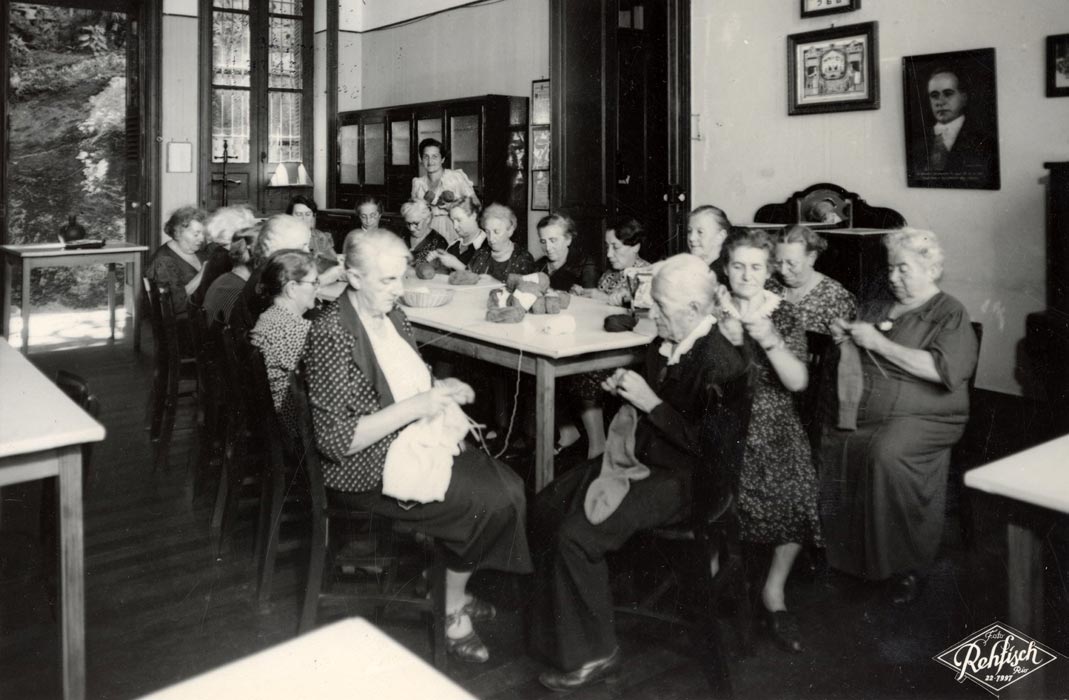
Women sewing at the Lar de Uniao refugee home
JDC supported the local Refugee Assistance Committee and partnered with them to fund services for refugees.
Rio de Janeiro, Brazil, 1940s. Agency: Foto Rehfisch Rio.
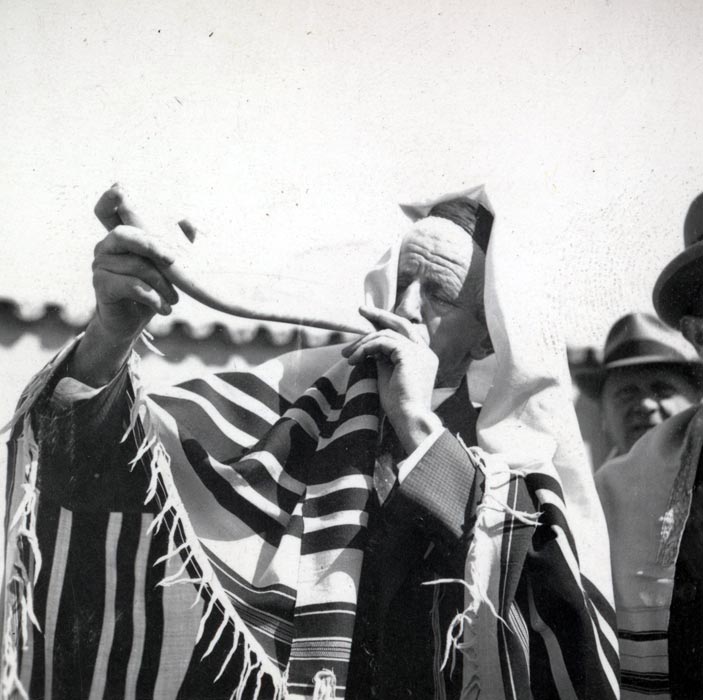
Blowing the shofar for the New Year
Cochabamba, Bolivia, 1940s.
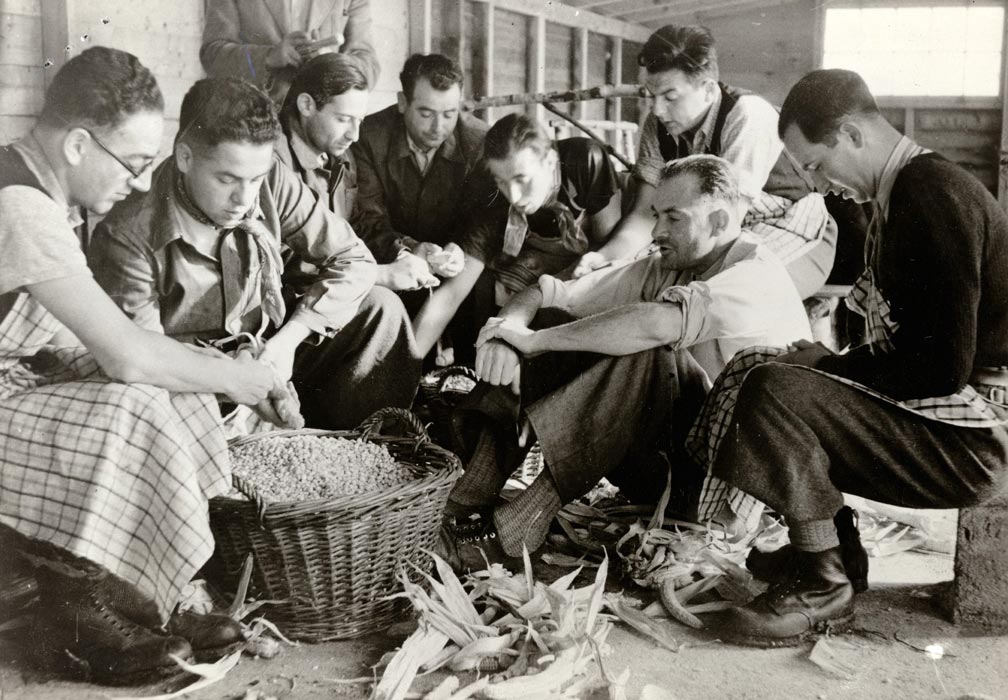
A group of men shucking ears of corn on an agricultural settlement
JDC partnered with two local Jewish refugee organizations, SOPRO and SOCOBO, to assist Jewish refugees escaping from Nazism. It established agricultural settlements for refugees, notably Buena Tierra.
Bolivia, 1943.
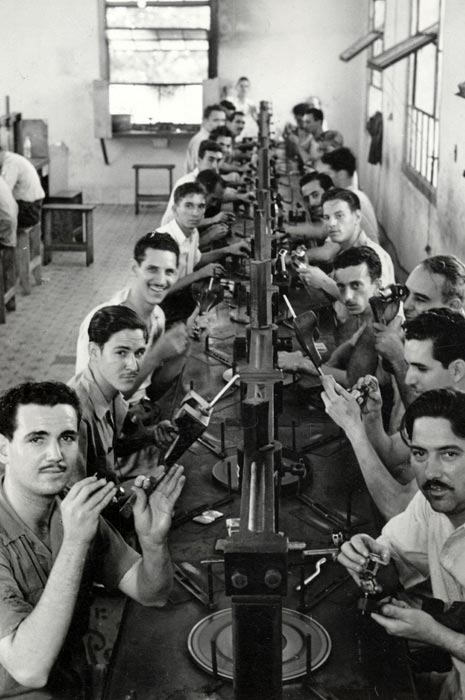
Refugees and native Cuban workers in a Havana industrial diamond plant
With JDC loans, skilled Jewish refugees from Holland and Belgium established this diamond plant to employ other refugees in Cuba’s growing diamond industry. The local authorities granted permission to open this plant as it would employ both refugees and local workers.
Havana, Cuba, 1940s. Photograph: Foto-Life.
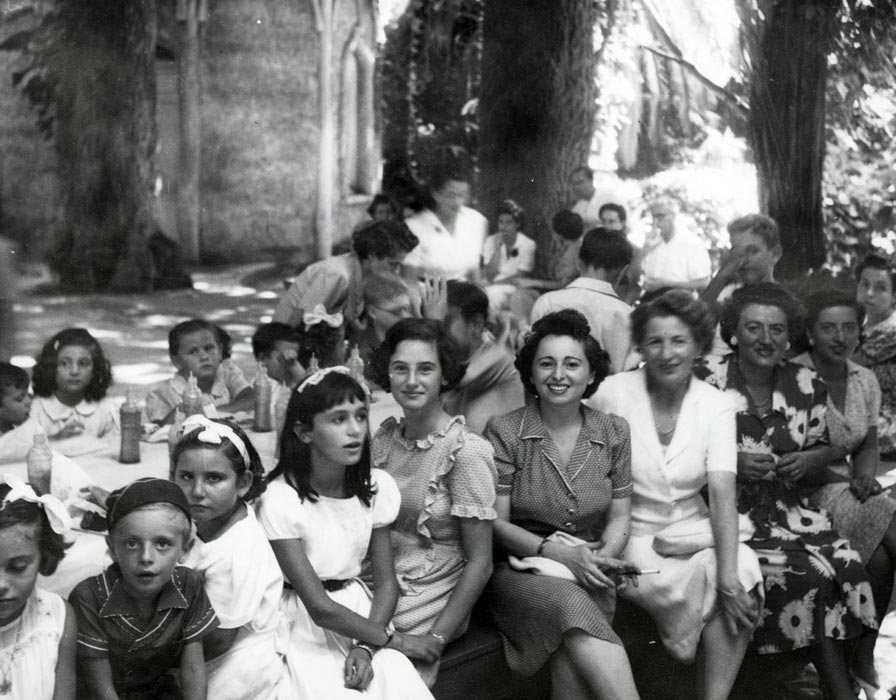
Children and caretakers watch the sports games at the Children's Summer Project
Most of the 12,000 refugees who arrived in Cuba between 1938-1944 received assistance from JDC through the local Joint Relief Committee.
Havana, Cuba, 1943.
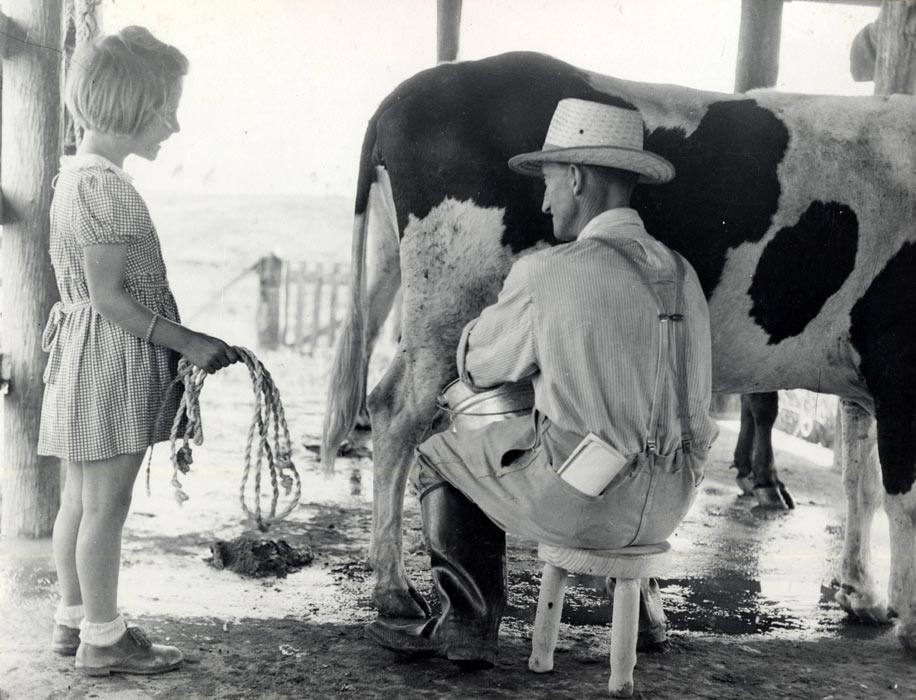
A girl watching a settler milking a cow
At the Evian Conference on Jewish Refugees from Nazi Germany, the Dominican Republic offered to accept Jewish refugees. Through the auspices of the Dominican Republic Settlement Association, JDC established and funded a thriving agricultural settlement for 700 refugees in Sosua.
Sosua, Dominican Republic, 1940s. Photograph: Hans Deutsch.
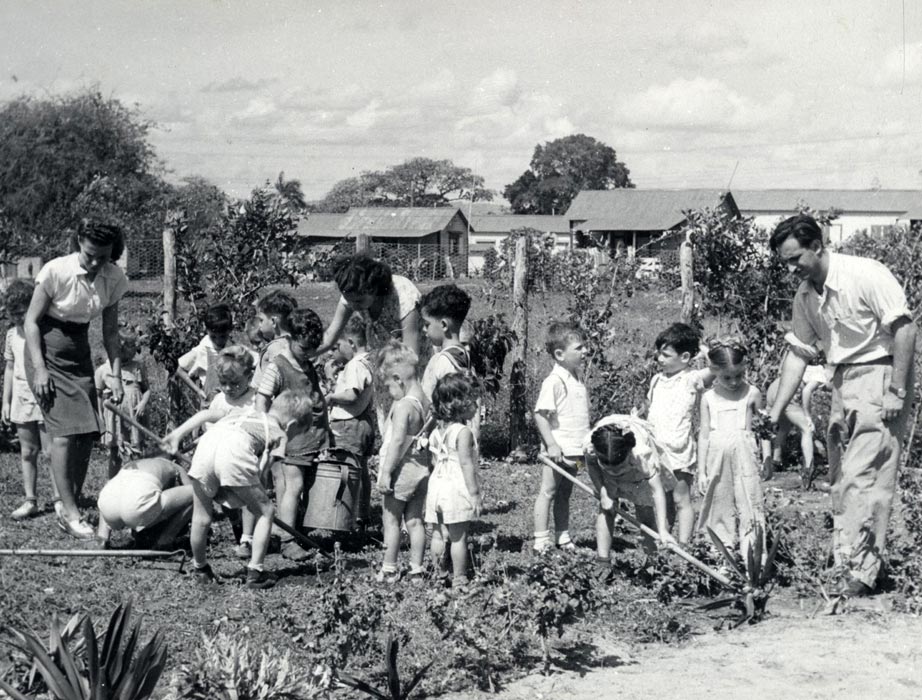
Young students learn to garden
These children were part of the community of 700 Jewish refugees from Germany and Austria who came to the Dominican Republic to escape Nazism.
Sosua, Dominican Republic, 1940s.

Visit by JDC leadership to JDC-supported Home for Children and Adolescents
Seen in this photo is then JDC Chairman Donald Robinson.
Chile, 1986.
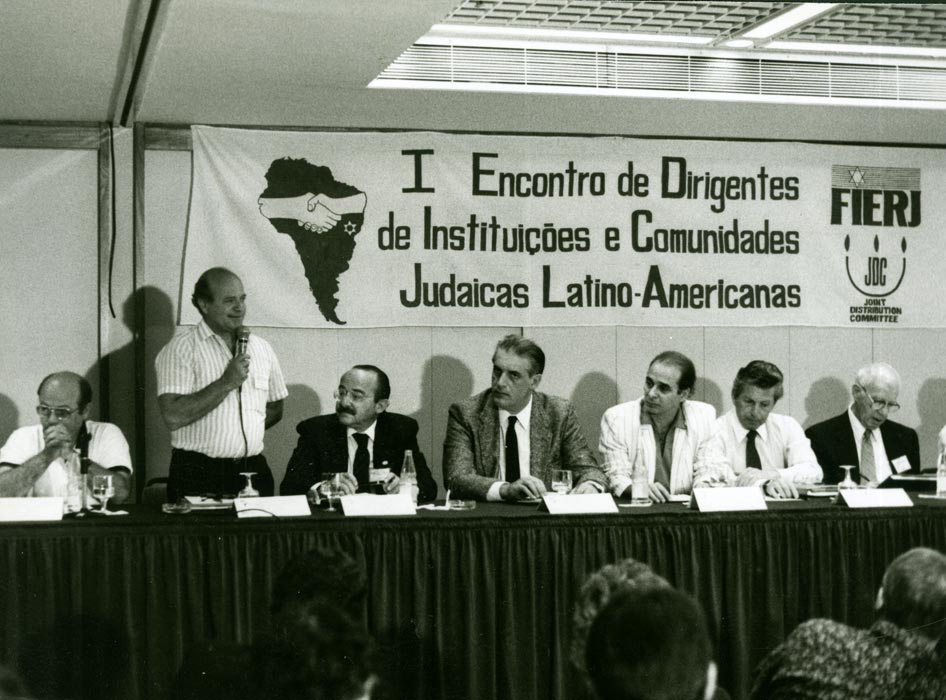
A meeting of Federação Israelita do Estado do Rio de Janeiro and JDC
By the 1990s, JDC was providing technical assistance and consultation to Jewish community groups in Brazil.
Rio de Janeiro, Brazil, 1990s.
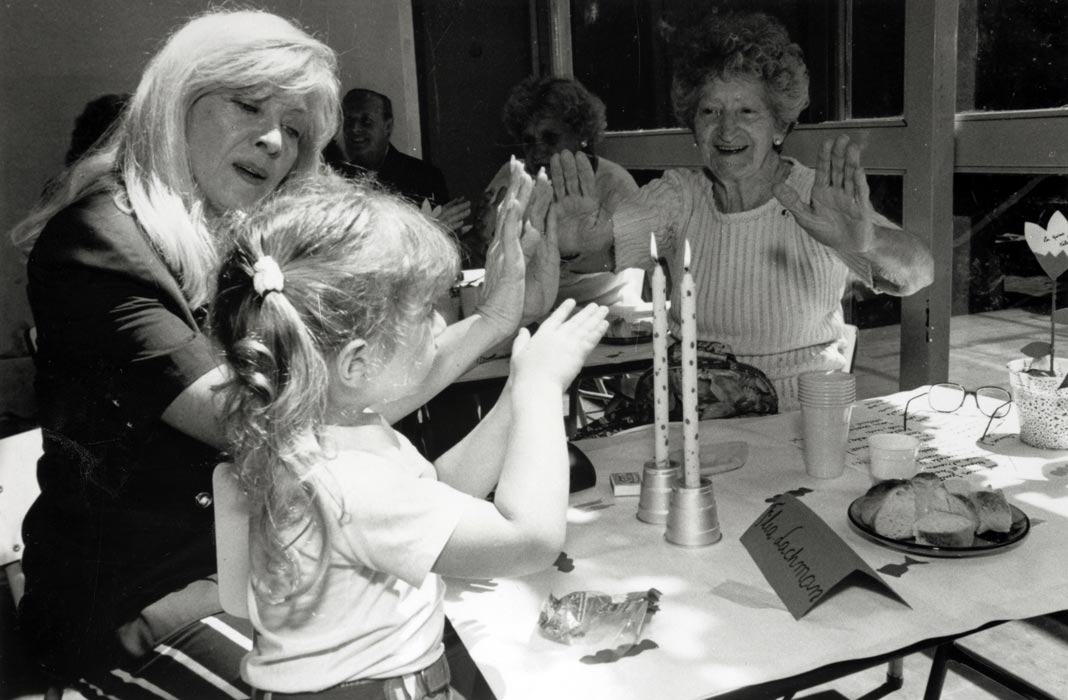
Three generations in an Argentine family blessing the Shabbat candles
Buenos Aires, Argentina, 1990s. Photograph: Roy Mittelman
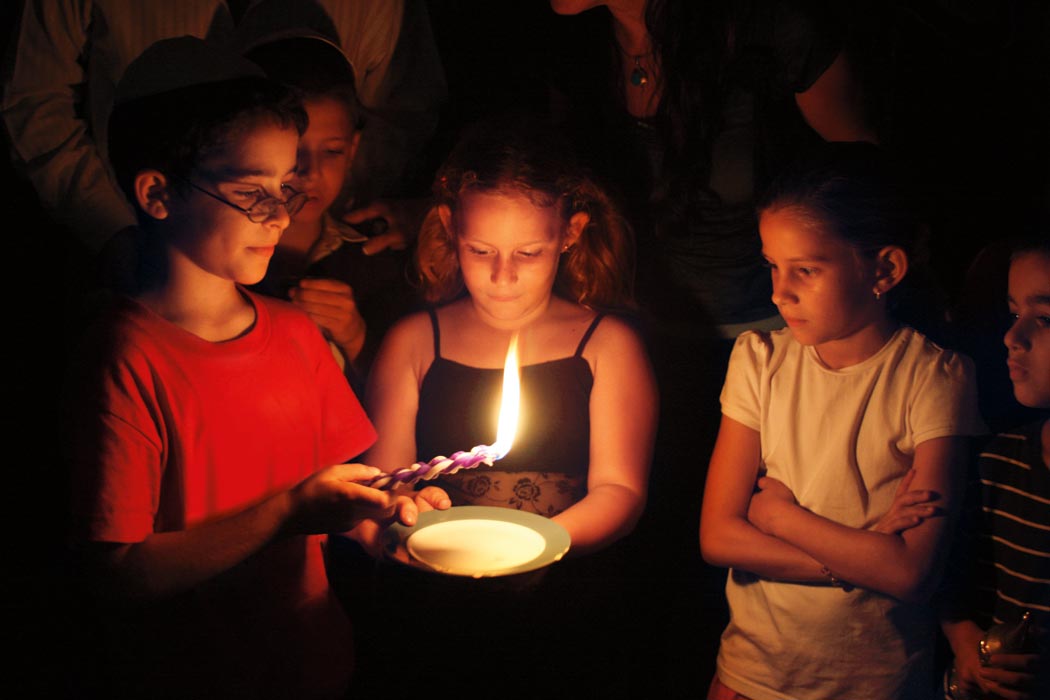
Cuban youth perform the Havdalah ceremony at the Patronato Synagogue, bringing Shabbat to a close and ushering in a new Jewish week
Following glasnost, JDC initiated both relief and Jewish renewal programs in Cuba.
Havana, Cuba, January 2009. Photograph: Julian Voloj.
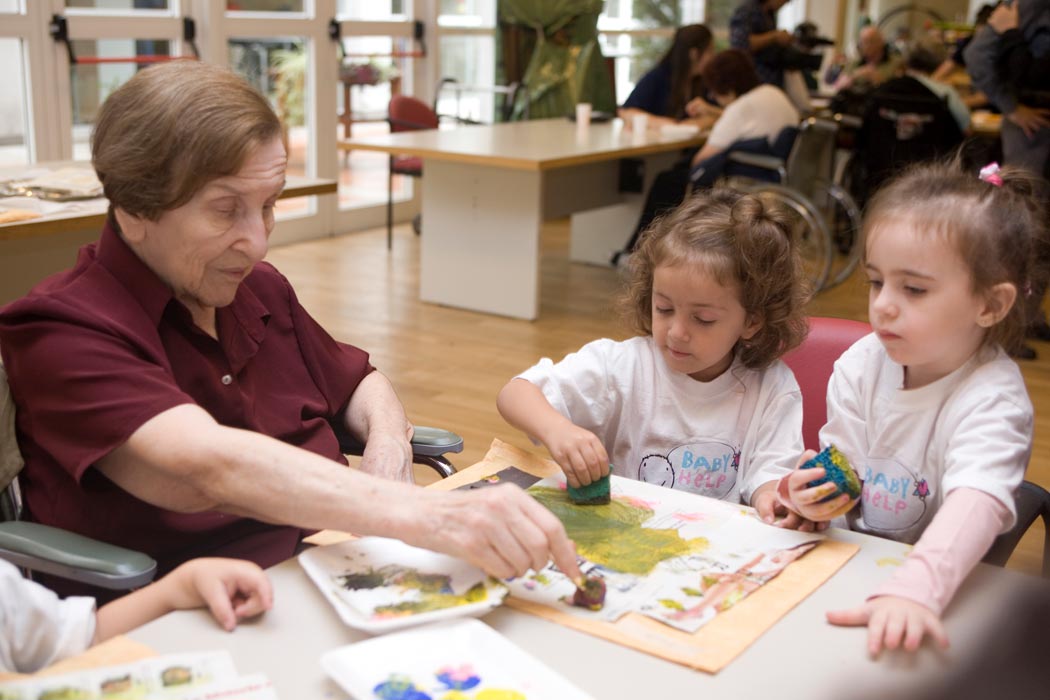
At the community's Le Dor vaDor complex for the elderly in Buenos Aires, an elderly resident and young children from JDC's on-site Baby Help day care center spend quality time together
The Baby Help program was initiated by JDC during the financial crisis, but continues to assist young Jewish families of limited means.
Argentina, 2013. Photo: Richard Lord.
Exhibit
Everything Possible:
JDC and the Children of the DP Camps
Featuring historic photographs from the JDC Archives, focuses on JDC’s significant efforts on behalf of children in the displaced persons camps established by the Allied Armed Forces after World War II. JDC was permitted to enter the camps to supplement minimal provisions with critical nutritional, medical, educational, and religious services for survivors.
